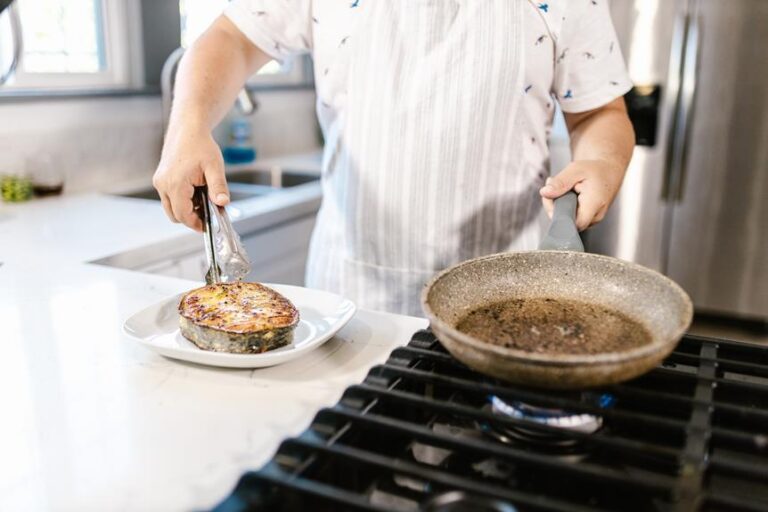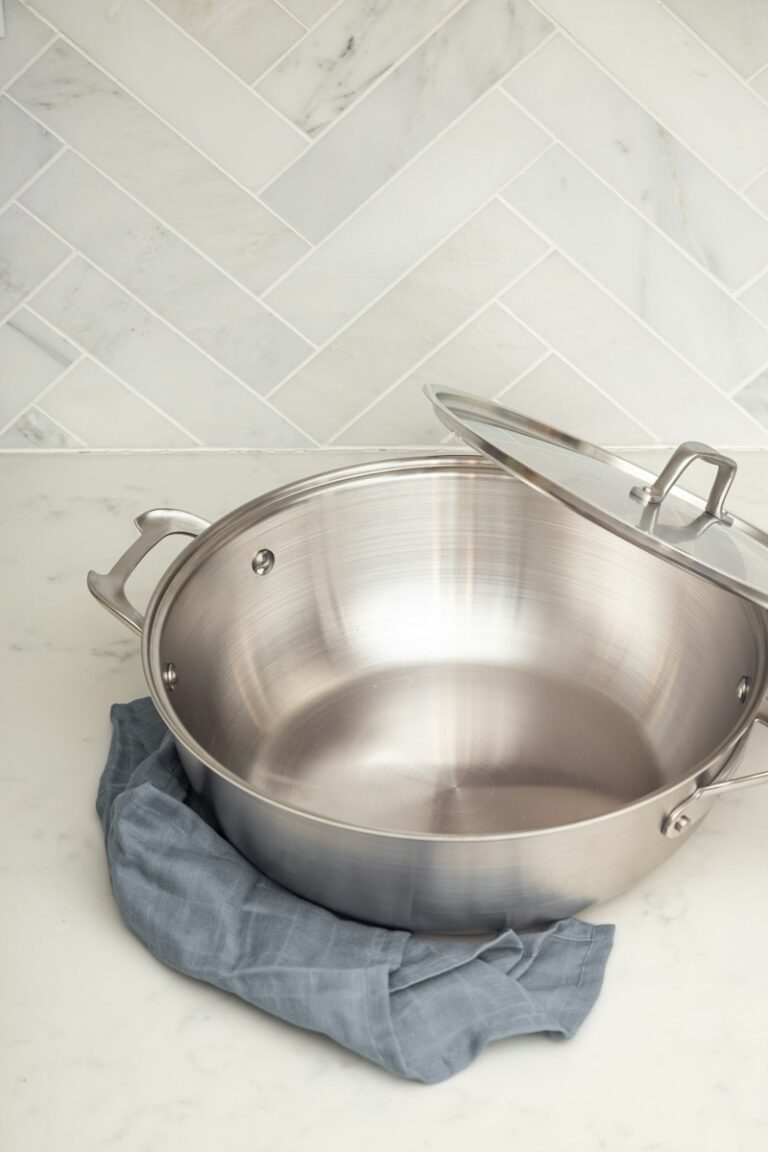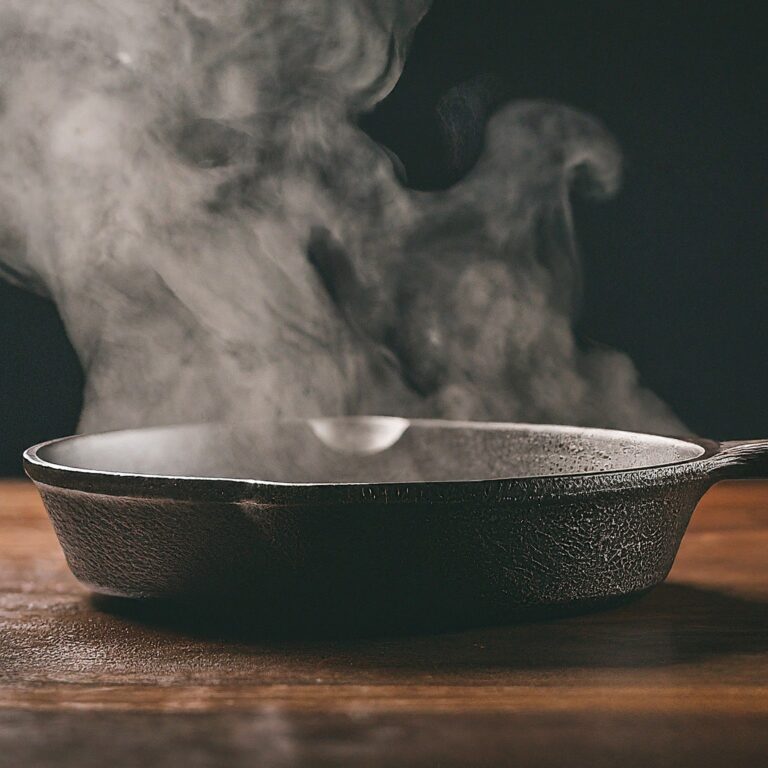Are you wondering if your cast iron pans are oven safe? Well, the good news is that they are! Using cast iron pans in the oven has numerous benefits.
In this article, we will explore the temperature limits of cast iron pans and provide proper seasoning techniques for oven-safe use. We will also debunk common myths and offer tips on preheating and preparing your pan for oven use.
So, get ready to discover a whole new world of delicious recipes and learn how to care for your cast iron pan after using it in the oven.
Key Takeaways
- Cast iron pans are versatile and can be used on stovetop, oven, or grill.
- Proper seasoning and temperature control are essential to prevent damage to the pan.
- Cast iron pans can withstand high temperatures in the oven, but warping or cracking can occur if temperature limits are exceeded.
- Regular cleaning, seasoning, and proper maintenance prolong the lifespan of cast iron pans.
Benefits of Using Cast Iron Pans in the Oven
Using cast iron pans in the oven offers you numerous benefits. One benefit is even heat distribution, which means your food will cook more evenly, with no hot or cold spots. Another benefit is the ability to sear and bake all in one pan. When you place a cast iron pan in the oven, it heats up evenly and retains that heat for longer periods of time compared to other materials. This is because cast iron pans have excellent heat retention properties. This allows you to easily transition from stovetop searing to oven baking without needing to transfer your ingredients into another dish. Not only does this save you time and effort, but it also enhances the flavors and textures of your dishes by keeping them moist and tender. So go ahead and explore all the delicious possibilities that using cast iron pans in the oven can offer you!
Understanding the Temperature Limits of Cast Iron Pans
When it comes to cooking with cast iron, it’s important to know the temperature limits. Cast iron pans are known for their durability and versatility, but they do have their limits when it comes to heat. Here are three things you should keep in mind:
- Avoid extreme temperature changes: Sudden changes in temperature can cause your cast iron pan to crack or warp. Always allow your pan to cool down gradually before exposing it to extreme heat or cold.
- Be mindful of high heat: While cast iron pans can handle high temperatures, there is a limit. Exposing them to excessively high heat can damage the seasoning or even cause them to lose their shape.
- Check manufacturer’s instructions: Different brands may have different temperature limits for their cast iron pans. It’s always a good idea to consult the manufacturer’s instructions for specific guidelines on oven use and temperature limits.
Proper Seasoning Techniques for Oven-Safe Cast Iron Pans
To properly season your oven-safe cast iron, you’ll want to make sure you coat it evenly with oil before baking.
Start by preheating your oven to 400°F (200°C).
Next, wash your cast iron pan with warm water and a mild dish soap to remove any manufacturing residue. Dry the pan thoroughly using a clean cloth or paper towel.
Now, pour a small amount of vegetable oil into the pan and use a brush or paper towel to spread it evenly across the entire surface, including the sides and handle.
Place the oiled pan upside down on the middle rack of your preheated oven and let it bake for about an hour.
After that, turn off the oven and leave the pan inside until it cools completely.
Repeat this process two or three more times for optimal seasoning results.
Common Myths and Misconceptions About Using Cast Iron Pans in the Oven
When using cast iron pans in the oven, it’s important to be aware of their temperature limits and proper oven maintenance. Understanding the temperature limits will prevent your cast iron from warping or cracking under extreme heat.
Proper oven maintenance, such as regular cleaning and seasoning, will help prolong the lifespan of your cast iron pans and ensure optimal performance.
Cast Iron Temperature Limits
Cast iron pans can withstand high temperatures in the oven. They are known for their durability and ability to handle extreme heat. When using a cast iron pan in the oven, you can rely on its strength and resilience.
Here are three reasons why cast iron pans are perfect for cooking in the oven:
- Retains heat evenly: Cast iron pans distribute heat evenly throughout the entire surface, ensuring that your food cooks consistently and thoroughly.
- Versatile cooking options: Whether you’re roasting meats, baking bread or making casseroles, a cast iron pan can handle it all. Its versatility allows you to explore various cooking methods with confidence.
- Enhanced flavor development: The steady heat retention of a cast iron pan helps enhance the flavors of your dishes by promoting caramelization and creating a delicious crust.
With these benefits, using a cast iron pan in the oven is not only practical but also adds an extra layer of satisfaction to your culinary adventures.
Proper Oven Maintenance
Regularly cleaning and maintaining your oven ensures optimal performance and prolongs its lifespan, allowing you to enjoy delicious meals without any issues. To help you keep track of the essential maintenance tasks, here’s a handy table:
| Maintenance Task | Frequency | Tools Needed |
|---|---|---|
| Clean oven interior | Once a month | Oven cleaner, sponge |
| Check seals | Every 6 months | Visual inspection |
| Clean oven racks | Every 3 months | Dish soap, scrub brush |
| Replace lightbulb | As needed | Screwdriver |
Tips for Preheating and Preparing Cast Iron Pans for Oven Use
To properly preheat and prepare your cast iron pan for oven use, make sure to follow these tips.
- Season it well: Before using your cast iron pan in the oven, make sure it is properly seasoned. This will not only enhance its non-stick properties but also protect it from rusting. The rich flavor that a well-seasoned cast iron imparts to your food is simply unmatched.
- Heat it slowly: Cast iron pans have excellent heat retention properties, but they can take longer to heat up compared to other cookware materials. To prevent warping or cracking, always preheat your cast iron pan slowly in the oven.
- Handle with care: Remember that cast iron pans get extremely hot in the oven. Always use potholders or oven mitts when handling them to avoid burns. Additionally, never place a cold or wet cast iron pan directly into a hot oven as this can cause thermal shock and damage the pan.
Exploring Different Oven Recipes and Dishes for Cast Iron Pans
When it comes to exploring different oven recipes and dishes, you’ll be amazed at the versatility of your trusty cast iron pan. From savory main courses to decadent desserts, your cast iron pan can handle it all.
Imagine sizzling steaks with a perfectly seared crust or baking a golden-brown cornbread that’s crispy on the outside and moist on the inside. With a cast iron pan in your arsenal, you can even whip up delicious deep-dish pizzas or mouthwatering fruit cobblers.
The even heat distribution of the cast iron ensures that your food cooks evenly and retains its moisture for maximum flavor. So go ahead, experiment with new recipes and let your cast iron pan take center stage in your oven adventures.
Caring for Your Cast Iron Pan After Oven Use
After baking in your cast iron pan, it’s important to properly clean it to maintain its quality. Use warm water and a non-abrasive sponge to remove any food residue. Avoid using soap as it can strip off the seasoning layer.
Seasoning your cast iron pan regularly will help prolong its longevity. It creates a protective coating against rust and enhances its non-stick properties.
To maintain the non-stick surface of your cast iron pan, avoid cooking acidic foods for long periods. Always dry it thoroughly after cleaning to prevent moisture buildup.
Cleaning After Baking
Cleaning cast iron pans can be a challenge after baking, but it’s important to properly care for them to maintain their seasoning. Don’t worry, with a little effort and the right techniques, you can easily restore your pan to its former glory.
Here are some tips to help you out:
- Use hot water and gentle scrubbing: Avoid using soap that can strip away the seasoning. Instead, use hot water and a soft sponge or brush to gently scrub off any stuck-on food.
- Dry thoroughly: After cleaning, make sure to dry your pan completely. This will prevent any moisture from causing rust.
- Apply a thin layer of oil: To keep your cast iron pan well-seasoned, apply a thin layer of oil after each use. This will help maintain its non-stick properties.
Seasoning for Longevity
To maintain the longevity of your seasoned cast iron, it’s essential to regularly apply a thin layer of oil. This simple step helps prevent rust and keeps your pan in top shape for years to come. By creating a protective barrier between the metal and air, the oil acts as a shield against moisture and oxidation. Here’s an easy guide on how to season your cast iron pan:
| Step | Instructions |
|---|---|
| 1 | Preheat your oven to 350°F (175°C). |
| 2 | Wash the pan with hot water and a small amount of dish soap. |
| 3 | Dry it completely with a towel or place it on low heat for a few minutes to evaporate any remaining moisture. |
| 4 | Apply a thin layer of vegetable oil or shortening inside and outside of the pan, including the handle. |
Maintaining Non-Stick Surface
To maintain the non-stick surface of your seasoned cast iron, remember to avoid using metal utensils that could scratch the pan. Opt for wooden or silicone tools instead. Here are three reasons why this is important:
- Preserves the seasoning: Metal utensils can scrape off the protective layer of seasoning on your cast iron, exposing it to rust and making it less effective at preventing food from sticking.
- Ensures healthier cooking: Scratched pans can release small pieces of metal into your food, which you definitely don’t want to ingest.
- Prolongs the lifespan: By using non-metal utensils, you’ll keep your cast iron in better condition for longer, saving you money in the long run.
Conclusion
In conclusion, using cast iron pans in the oven can be a great way to enhance your cooking experience. The benefits of their durability and heat retention make them a versatile tool for various dishes.
By understanding the temperature limits and properly seasoning your pan, you can ensure its oven-safe use. Don’t let common myths deter you – with proper care and preparation, your cast iron pan will serve you well in the oven.
So go ahead, explore new recipes and enjoy the delicious results!




